Sternum (Brestbone)
Overview
The sternum is a bone located in the center of your chest. It can be additionally referred to as the breastbone. The sternum, an even, shaped T, bone in the center and anterior of the chest, safeguards the internal organs and muscles.
It ties together with other bones and muscles and is an essential part of the rib cage, which secures the heart and lungs. Many conditions can cause sternum pain, however the majority are not significant. Should you experience any problems, speak with your doctor.
What is Sternum?
The smooth, T-shaped breastbone, commonly referred to as the sternum, is located in the middle and upper region of the chest. The sternum protects the organs and muscles inside the chest from harm. Through cartilage, it joins other bones and muscles. Your heart and lungs are protected by this part of your rib cage. Your sternum and breastbone are interchangeable.
Anatomy of the Sternum
The breastbones are situated in the middle and front of your chest. Sternum appears in the upper region of your chest, exactly on the front of your thymus. Your clavicles, which extend horizontally (from side to side) over it, are where it attaches.
From top to bottom, your sternum is roughly 6 inches long. Your sternum has the shape of an inverted sword. This is due to the broad portion at the top looks like a handle. The sternum’s body is particularly long and flattened, much like a sword’s blade. The end of the sternum’s xiphoid process also has a sword-like appearance.
Three bone components make up your sternum. These components consist of:
- Manubrium: We call this broad, handle-like region of the sternum the manubrium. Your first set of ribs and collarbone are attached here. Your second set of ribs attaches to the body of your sternum, bordered by the manubrium’s lower edge.
- Body: In the middle is the sternum’s body. It is the longest, narrowest, and flatest portion of your sternum. Along the body, the sternum is connected to your third, fourth, fifth, sixth, and seventh sets of ribs.
- Xiphoid process: This is the name given to the lowest point of the sternum. The term “xiphoid process” refers to the point of the sternum. It is more slender and thinner than the entire continent’s sternum. Although its shape may vary, it usually takes the shape of a little point at the base of the sternum. Cartilage has made up practically every component of your sternum’s pointy end. It starts to calcify and become bone as you get older.
The thymus gland is behind the breastbone or sternum. It is part of the lymphatic system and is responsible for training T-lymphocytes, which are specialized white blood cells.
The function of the Sternum
Together with your rib cage, the sternum (breastbone) protects the organs inside your chest. You are included in this:
- Stomach
- Esophagus
- lungs
- Heart
- Blood vessels
The breastbone not only supports you but also connects your clavicle, or collarbone, and the first six pairs of ribs to other parts of your skeletal system. Your sternum is connected to other muscles in your chest and upper abdomen.
You cannot move your chest or torso with the help of your sternum. However, the cartilage that joins your ribs and sternum facilitates the little movements that happen each time you breathe.
Conditions and disorders associated with Sternum
Sternum discomfort can be caused by a variety of problems with your sternum and the bones and muscles that surround it. You can also have substernal pain, which is discomfort behind or beneath your sternum. Gastrointestinal disorders are typically the cause of this kind of pain. The following are some typical reasons for sternum or substernal pain:
- Costochondritis
- Pectus carinatum
- Sternum (sternal) fracture
- A sternoclavicular joint injury
- A collarbone injury
- Muscle strain
- Hiatal hernia
- Acid reflux
- Pleurisy
- Bronchitis
- Pneumonia
The costochondritis
A disorder called costochondritis results in inflammation of the cartilage connecting your ribs to your sternum. An infection, trauma, or arthritis could be the cause of the condition. Costochondritis is characterized by rib tenderness and intense, stabbing pain. Although it can spread to your arms and shoulders, you often feel pain in your sternum and the first three pairs of ribs. Additionally, you can sense a sense of softness and warmth in the space.
Sign and Symptoms
- Chest pain that intensifies with movement, stretching, coughing, or deep breathing.
- Tenderness.
- You have rib discomfort.
- The sides of your sternum hurt sharply.
Treatment
Rest is the most popular treatment for costochondritis. It is important to give your chest and ribs time to heal. Nonsteroidal anti-inflammatory drugs (NSAIDs) and other over-the-counter (OTC) painkillers may also be suggested by your healthcare professional. To lessen the inflammation, your doctor may infrequently give you a corticosteroid injection.
Pectus carinatum
When you have pectus carinatum, your sternum protrudes more than it should. Because of the way the disorder makes your chest seem, it is also known as pigeon chest or keel chest. The majority of pectus carinatum patients show no symptoms. However, there are some positions and activities that can cause you to feel pain in your chest.
Sign and Symptoms
- While engaging in specific activities and positions, you can feel some chest pain, or you might not have any symptoms at all.
Treatment
Bracing and surgery are the two most popular methods of treating pectus carinatum. Wearing a brace over your chest all day, every day, for months or even years is known as bracing. This allows your sternum to return to its natural position by applying pressure from the front and rear.
A treatment known as the Ravitch procedure is used to operate on pectus carinatum. To remove the cartilage at the front of your chest, a surgeon will make an incision. After making a little incision at the front of your breastbone, they will force it back into its natural position and secure it there.
Fracture of the sternum (sternum)
Breaking your sternum bone, usually as a result of blunt force trauma, results in a sternal fracture. Auto accidents frequently result in sternum fractures. They also originate as a consequence of falls and injuries sustained in sports. Sternum fractures come in two varieties:
- Direct: A break farther back in your chest that results from a direct hit to the front of your chest wall.
- Indirect: When a break happens toward the front of your chest due to damage to your sternum.
Sign and Symptoms
- A sore chest that worsens when you cough or take heavy breaths.
- Tenderness.
- Bruises.
- Swelling.
- Feeling unable to breathe or having issues with breathing
Treatment
The kind and extent of your injury will determine how you are treated for a sternal fracture. In mild circumstances, you may merely require rest and painkillers. In more extreme situations, surgery can be necessary to realign your sternum.
Injury to the sternoclavicular joint
Infections, injuries, or arthritis can sometimes create problems in this joint area, although they are rare. Pain and suffering will be experienced if you have an injury there.
Sign and Symptoms
- Pain or soreness around the sternoclavicular joint.
- Bruising.
- Mild edema and heat in the joint region.
- It is difficult to move your shoulder.
- When attempting to move your arm, you may hear a clicking, popping, or crunching sound.
- Redness, fever, and chills are several symptoms that indicate an infection.
Treatment
The degree of your sternoclavicular joint damage also determines how you should be treated. Your doctor could advise rest and avoiding pain-inducing activities and medications for mild cases. Surgery may be necessary in more severe situations.
Injury to the collarbone
Your clavicle, or collarbone, joins the upper corners of your sternum. Due to their intimate connection, if you injure your collarbone, your sternum will also hurt and be uncomfortable. Your collarbone may sustain damage from falls, sports injuries, and accidents.
Sign and Symptoms
- As you elevate your arm, any pain or discomfort along the collarbone gets worse.
- Bruising.
- Swelling.
- In the process of moving your shoulder, you may hear crackling, clicking, or grinding.
- A palpable bulge or bump.
- Atypical drooping of your shoulder.
Treatment
The degree of a collarbone (clavicle) injury determines how it should be treated. Your doctor might suggest a collarbone fracture brace or a sling to prevent your arm from moving in moderate situations. Along with painkillers to aid with the discomfort, they could advise icing it to lessen swelling. You may need to see a physical therapist to help strengthen your shoulder and improve the range of motion in your arm. In extreme situations, surgery can be necessary.
Muscle strain
Injuring a tendon or muscle can result in a pulled muscle or a muscular strain. Your sternum is related to numerous muscles and tendons. Consequently, your sternum may potentially be impacted by damage to a muscle or tendon. Sports, excessive coughing, and overuse can all result in muscle strains.
Sign and Symptoms
- Deep breathing exacerbates chest tenderness or pain.
- Bruises.
- Swelling.
- Limited or reduced range of motion.
Treatment
The majority of muscular strains can be treated with over-the-counter painkillers, heat and cold, massage, and rest. Prescription muscle relaxants may occasionally be recommended.
Surgery may be necessary for more serious injuries.
Hiatal hernia
A hiatal hernia takes place when the upper portion of your stomach crosses over your diaphragm and moves toward your chest. Substernal pain, or pain behind your sternum that affects the region behind your chest, may result from this. The most commonly encountered type of hernia is a hiatal hernia.
Sign and Symptoms
- Frequent burping.
- Heartburn.
- A sensation of fullness (indigestion).
- Swallowing is difficult.
- Experiencing a lumping sensation in your throat.
- These sensations frequently intensify while lying down.
Treatment
If you have no symptoms from a hiatal hernia, you may not always require therapy. However, without treatment, your symptoms won’t go away. Acid reflux medication and lifestyle modifications like eating smaller meals, not reclining down after eating, and losing weight can help treat mild cases of hiatal hernias. In more severe cases, you might require surgical intervention.
Acid reflux
When your stomach’s acid irritates and inflames the lining of your esophagus, acid reflux occurs. Substernal soreness may result from this. People who have gastroesophageal reflux disease (GERD) are most frequently affected by the disorder.
Sign and Symptoms
- Backwash from your stomach to your throat.
- A burning sensation in your esophagus.
- Sore throat.
- Experiencing a lump in your throat.
- These sensations frequently intensify after eating.
Treatment
Making lifestyle adjustments, such as eating well-balanced meals, avoiding particular trigger foods, stopping smoking, and consuming less alcohol and caffeine, may help cure acid reflux. You could require medicine to lower the amount of acid in your stomach if you have GERD or chronic acid reflux disease. Some medications, including antacids, are sold over the counter. Experiencing a lumping sensation in your throat. A prescription may be necessary for certain drugs, for instance, proton pump inhibitors (PPIs).
Pleurisy
Your pleurae, which are the tissue sheets that lie between your ribs and lungs, become inflamed when you have pleurisy. Pleurisy can be caused by bacterial or viral infections, lung disorders, and some autoimmune diseases. Substernal soreness may also result from this.
Sign and Symptoms
- Sharp discomfort that gets exacerbated when you cough, breathe heavily, or wheeze.
- Shortness of breath.
- Fever.
- Extreme exhaustion or tiredness.
Treatment
The treatment plan is determined by the underlying cause of pleurisy. To alleviate symptoms, your healthcare professional could suggest painkillers. To treat an infection, you might require medicine. In extreme circumstances, your doctor might perform a thoracentesis, a technique in which fluid is extracted from your lungs.
Bronchitis
The trachea (windpipe) and bronchi, the main airways that lead to your lungs, get inflamed when you have bronchitis, which results in substernal pain. Your lungs fill with mucus as a result of this inflammation, giving you a persistent cough that may persist for weeks.
Sign and Symptoms
- Chest discomfort.
- Severe coughing episodes.
- Shortness of breath.
- Wheezing.
- Fever.
- Fatigue.
Treatment
The cause determines how to treat this. Antiviral drugs can be used to treat certain viruses, such as the flu or COVID-19. If you’re having problems breathing, your doctor might prescribe corticosteroids to reduce inflammation or a medication called a bronchodilator to assist expand your airways.
Pneumonia
Pneumonia is characterized by inflammation of the air sacs, or alveoli, in the lungs. Sharp chest pains may result from the fluid that fills the alveoli once they have swelled. This ache may be felt behind your sternum.
Sign and Symptoms
- There is a severe cough.
- Shortness of breath.
- Fever.
- Sweating.
- Nausea and vomiting.
- Loss of appetite.
- Confusion.
Treatment
Whether a bacterial, viral, or fungal infection caused your pneumonia will determine how it is treated. Your doctor might recommend an antibiotic if your illness was brought on by a bacterial infection. If you have a fungal illness, they would suggest an antifungal; if you have a viral infection, they might prescribe an antiviral.
Heart attack versus sternum pain
You could be concerned that you’re suffering a heart attack if you’re getting chest pain. However, sternum discomfort is not the same as heart attack pain. Sternum pain typically starts abruptly. Before the onset of a heart attack, you will probably have additional distinct symptoms. Heart attack symptoms can include:
- A sensation of fullness, pressure, or squeezing in the middle of your chest that could spread to your mouth, teeth, or arm.
- Perspiration, particularly cold sweats.
- Queasy feeling.
- Breathlessness.
- Dizziness.
Summary
The sternum, often known as the breastbone, is a vertical bone located at the top of the chest that supports and shields your muscles and other bones. Sternum or substernal pain can be caused by several different medical disorders, however the majority are not life-threatening.
To determine the source and obtain treatment for chronic sternum discomfort, contact your healthcare physician. Even though sternum discomfort is not the same as the agony you would receive from a heart attack, be aware of the warning signals so you know when to seek emergency medical help.
FAQs
What function does the sternum serve?
The sternum, in conjunction with your ribs, protects your heart, lungs, and blood arteries in your chest. Assistance. Additionally, your sternum provides a visual cue that draws attention to various parts of your skeleton, such as your collarbone and a significant number of your ribs.
Which muscles are connected to the sternum?
The pectoralis major and sternocleidomastoid sternal fibers are joined to the anterior surface. It is the posterior area where the sternothyroid and sternohyoid muscles attach.
What has an impact on your sternum?
Pain in this region may be caused by an infection, inflammation, trauma, or the degeneration of the sternum’s cartilage. Problems with adjacent organs such as the heart, lungs, and esophagus can also result in pain in this region. This includes dyspepsia, pleurisy (a lung irritation), and respiratory failure.
Can pain radiate from the sternum?
The ligament known as the costochondral joint is what joins your ribs to your sternum, or breastbone. Sharp or painful pain is a symptom of costochondritis. The annoyance may start suddenly or develop gradually before spreading throughout your chest.
Does sternum pain go away?
A fractured sternum will usually heal itself. It can take three months or longer for the pain to subside. Even when the doctor has given you a thorough examination, issues may still occur. As soon as you observe any problems or new symptoms, get medical help.
References
- Rohit, B. (2023, April 24). Sternum bone – Anatomy, Structure, Function – Samarpan Physio. Samarpan Physiotherapy Clinic. https://samarpanphysioclinic.com/sternum-bone/
- Professional, C. C. M. (2024, September 20). Sternum (Breastbone). Cleveland Clinic. https://my.clevelandclinic.org/health/body/sternum-breastbone
- Seladi-Schulman, J., PhD. (2020, April 27). What You Need to Know About Your Sternum. Healthline. https://www.healthline.com/health/sternum#bottom-line

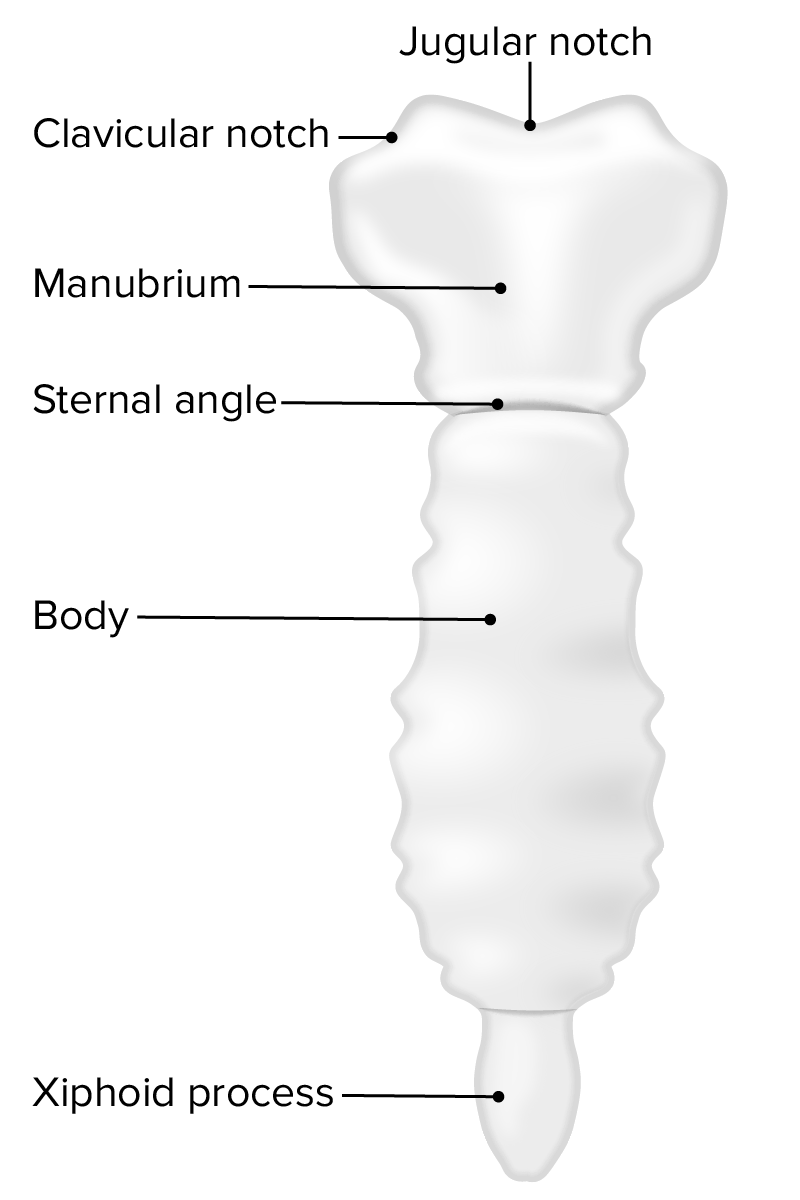
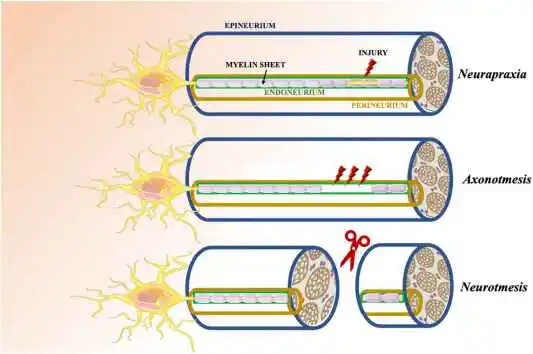
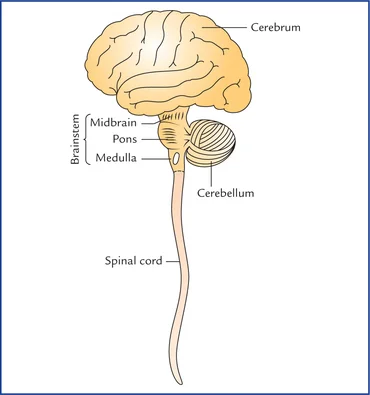
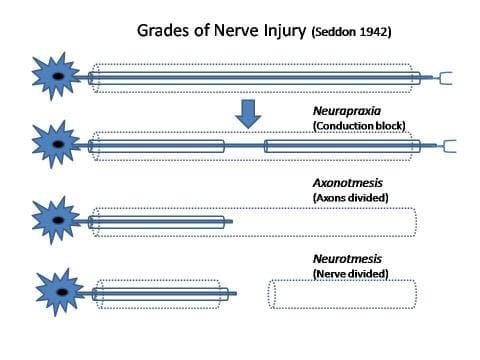
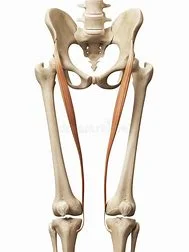
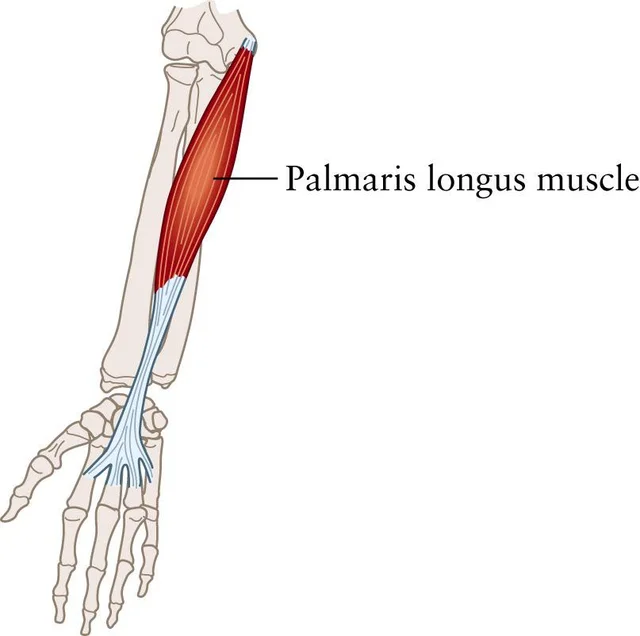
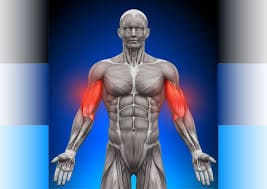
3 Comments